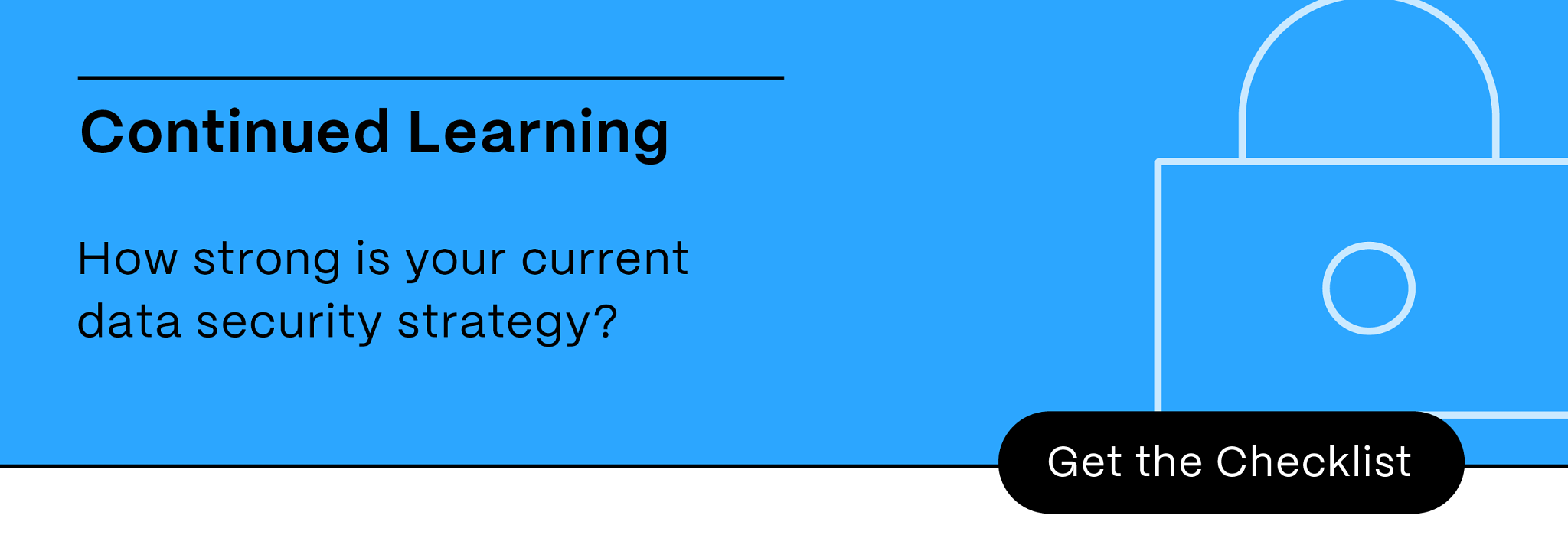
Blog
Overwhelmed by SaaS compliance? Document workflow automation has you covered

Regulations exist for a reason: to ensure that companies are enforcing best practices to protect customers and prevent illegal activities. But compliance isn’t always easy.
Legal requirements for SaaS platforms are especially complex and require constant vigilance. Even large, well-established businesses can make costly errors. For example, in 2023, Meta was fined $1.3 billion for not adhering to a major SaaS regulation.
To avoid the costly consequences of non-compliance, companies need to invest in the right technology to automate documents and processes. This article explores SaaS compliance and automation solutions to help you stay up-to-date with regulations.

Key Takeaways
- SaaS compliance means meeting all SaaS platform regulations, including requirements to strengthen cybersecurity, promote safe data usage, and uphold transparency.
- Document workflow automation assists with SaaS compliance by taking over tedious, repetitive tasks. It provides several benefits, including increased efficiency, productivity, and security.
- To maximize the benefits of automation technology for compliance document workflows, conduct thorough research to select the right software solutions.
What is SaaS compliance and why is it important?
SaaS compliance refers to actions companies must take to meet all legal requirements for SaaS platforms. This may include measures to strengthen cybersecurity, promote safe data usage, or increase the visibility of operations. Not only does compliance avoid fines and lawsuits, it lets you operate with greater security and integrity.
Across industries, SaaS platforms often collect data cybercriminals want to steal, including personally identifiable information (PII). With cybersecurity threats on the rise — evidenced by a 293% surge in email attacks in the first half of 2024 — SaaS regulations are crucial for preventing data breaches.
Furthermore, many laws specify how to publicize data, audits, and reports. Increasing visibility according to these rules builds trust with partners and customers by demonstrating that you follow ethical business practices.
Related read: SaaS management guide: strategies and best practices
SaaS compliance types and regulations
Multiple SaaS regulations may apply to your company depending on industry and geographic location. Requirements fall into three main categories: finance, cybersecurity, and data privacy. Here are some of the major laws and guidelines to be aware of for each compliance type:
Financial regulations
The following regulations cover how SaaS companies should report and manage finances. It’s important to comply with these to avoid regulatory fines, legal action, tax penalties, and reputational damage.
- International Financial Reporting Standards (IFRS): Provides a common language and methodology to compare statements from around the world. These globally accepted guidelines for public accounting statements promote greater transparency and reliability for financial documents.
- Accounting Standards Codification (ASC) 606: Clearly states how SaaS companies should recognize revenue. It offers a comprehensive framework to improve visibility and support business decisions.
- Generally Accepted Accounting Principles (GAAP): Explains how public companies and organizations that release public financial statements must manage accounting operations. The guidelines are upheld by the Financial Accounting Standards Board and promote error-free financial reporting.
Cybersecurity regulations
Legal requirements for cybersecurity outline the steps SaaS companies must take to safeguard data and systems from cybercriminals.
- The Federal Information Security Modernization Act (FISMA): Sets security requirements for businesses contracting with U.S. federal agencies. FISMA guarantees all companies working with the government adhere to standards set by the National Institute of Standards and Technology (NIST).
- Title 21 Code of Federal Regulation (CFR) part 11: Mandates secure practices for handling electronic records and signatures. SaaS companies must comply with this regulation to establish data integrity and effective audit trails for important documents.
- International Organization for Standardization (ISO) and International Electrotechnical Commission (IEC) standard 27001: Dictates how organizations should manage and protect sensitive information through a risk-based approach. ISO/IEC 27001 is an internationally recognized standard that helps uphold the confidentiality, integrity, and availability of company data.
Related read: ShareFile and Title 21 CFR Part 11
Data privacy regulations
Expanding on security requirements, these regulations promote high standards of privacy for customer information.
- General Data Protection Regulation (GDPR): Defines how companies must collect, store, and use data from citizens of the European Union (EU). It aims to grant Europeans more privacy and control over personal information, and applies to any businesses collecting data from the EU, regardless of location.
- Health Insurance Portability and Accountability Act (HIPAA): Upholds the privacy of patient information by setting requirements for data storage, transmission, and access. It’s essential for SaaS companies in the healthcare industry to comply with this federal regulation to earn customer trust and avoid severe penalties.
- Service Organization Control 2 (SOC 2): Assists with developing strong protocols to securely manage customer information. While this compliance standard is voluntary, it was created by the American Institute of CPAs (AICPA) to offer helpful criteria for upholding client privacy and earning trust.
Related read: A guide to protecting your data
What is the compliance workflow process?
To consistently meet legal requirements, modern SaaS companies need effective, streamlined workflows. A standardized process that clearly outlines each step for maintaining compliance relieves stress as can mean nothing is overlooked.
Here are some general steps you might include in a SaaS compliance management workflow:
- Identify regulations that apply to your company.
- Develop policies to support compliant business practices.
- Train staff to uphold policies consistently.
- Audit processes and monitor frequently to keep up with regulations.
How document workflow automation helps with SaaS compliance
If you’re struggling to figure out how to manage compliance documents effectively, workflow automation can help by taking over tedious, repetitive tasks. Using software to organize, track, and automate regulatory document processes provides several benefits:
- Efficiency: Achieve compliance faster with automation to streamline processes, improve document tracking, and increase organization.
- Productivity: Reduce manual steps in regulatory document workflows to help staff get more done.
- Security: Enable security settings within your automation platform that guarantee files are always protected according to industry standards.
- Scalability: Leverage flexible, cloud-based solutions and maintain a high-value automation platform even as your business expands.
- Fewer errors: Reduce mistakes using rule-based automation.
- Stronger business relationships: Establish trust with customers and partners when you demonstrate seamless compliance with industry regulations.
Choosing the right document workflow automation tools
To maximize the benefits of automation technology for compliance document workflows, select the right software solutions. Be sure to thoroughly research options before making an investment.
In addition to finding out if a solution meets all relevant regulations, use the checklist below to determine whether it has everything you need to simplify SaaS compliance.
What to look for in document workflow tools: a SaaS compliance checklist
- 256-bit encryption: Supports compliance by providing the highest level of file security.
- Audit trails: Helps you investigate instances of tampering and stay on top of reporting regulations with an automatic record of file access and alteration.
- Version control: Maintains past versions of documents to keep your company compliant with record keeping requirements.
- Third-party integrations: Enables seamless data flow for end-to-end SaaS compliance management, integrating with current software systems to save additional time.
- Signature and approval automations: Improve efficiency in document sign-off by using automatic alerts and routing.
- Cloud storage: Ensures your team can access compliance documents and leverage automation tools from anywhere.
- User-friendly interfaces: Encourages company-wide tech adoption since non-technical staff can easily navigate the platform on their own.
- Built-in compliance: Takes the latest SaaS regulations into account and offers frequent updates for maximum protection and peace of mind.
- High quality customer support: Guarantees comprehensive, ongoing assistance to get the most out of your document workflow automation solution.

Make SaaS compliance manageable with optimized document workflows
Compliance enables SaaS companies to build a trusted reputation and keep customer data secure while avoiding fines and legal penalties. Depending on your industry and location, you may need to keep up with multiple laws and guidelines. Fortunately, modern tools can save you from the complexity of regulatory tasks.
Document automation platforms lift the administrative burden of mandatory requirements so you can stay secure and compliant while working to advance your company. Start researching solutions to help you on your compliance journey and invest in the right tools to ensure your business is always legally protected.
Related Resources

Blog